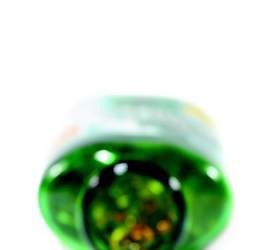FROM RMD OPEN
Patients with moderately active rheumatoid arthritis who were positive for rheumatoid factor and had baseline C-reactive protein levels above 40 mg/L had about a 60% chance of progressing on methotrexate monotherapy, investigators reported in RMD Open.
Elevated C-reactive protein (CRP) levels are known to predict radiographic progression in active rheumatoid arthritis (RA), but this study is the first to extend the finding to moderately active disease, said Dr. Bruno Fautrel of Pierre and Marie Curie University, Paris, and his associates. Understanding baseline predictors of radiographic progression could help clinicians to decide which patients need early, aggressive treatment and who can be spared intensive therapies, the researchers added.
“Studies investigating the risk of disease progression in patients with established and stable moderate disease activity are very limited,” they noted. “While it is established that moderate disease activity is not an adequate target for patients with RA, in real life, those with moderate RA represent a substantial proportion of patients in clinical practice.”
The study was a subgroup analysis of 96 patients with moderate RA from the methotrexate arm of the multicenter, phase III, randomized, double-blind, TEMPO (Trial of Etanercept and Methotrexate with Radiographic Patient Outcomes) trial . Patients had sustained moderate RA, defined as mean disease activity score in 28 joints ranging from 3.2 to 5.1 during the last 6 months of the first year. The researchers scored radiographs of hands, wrists, and feet based on the modified Total Sharp Score (mTSS) method, and defined radiographic progression as an increase from baseline mTSS of at least 3.0 after at least 2 years of methotrexate treatment. Patients averaged 55 years of age, and 84% were women, the investigators said (RMD Open 2015;1:e000018 doi: 10.1136/rmdopen-2014-000018) .
Overall, about 26% of patients had signs of significant radiographic progression after 2 years of methotrexate treatment, and 34% had significantly progressed after 3 years, the researchers reported. Stratifying patients by baseline rheumatoid factor (RF) and CRP levels showed that those who were RF-positive at baseline with CRP levels above 40 mg/L were significantly more likely to progress at year 2 (51%; 95% confidence interval, 32%-69%) and year 3 (61%; 95% CI, 42%-78%) than were other patients, they said. In fact, only 33% of patients who were RF-positive and had baseline CRP levels below 10 mg/L had significantly progressed at year 3, as had only 10% of patients who were RF-negative and had baseline CRP levels below 10 mg/L. The median change in mTSS at year 3 was 3.6 for the highest-risk group, compared with zero for the lowest-risk group. Baseline erosion scores did not predict radiographic progression, probably because TEMPO patients had erosive disease at baseline, the researchers said.
The study was a post hoc analysis with a small sample size, and the mean methotrexate dose at baseline was only 7.5 mg/week, although the weekly dose rose to an average of 15 mg by week 24 of the study. Future studies should examine progression on etanercept monotherapy and on methotrexate-etanercept dual therapy, the investigators said.
Pfizer supported the research. Dr. Fautrel reported financial relationships with Pfizer, AbbVie, Bristol-Myers Squibb, Merck Sharp & Dohme, Roche, Sobi, and UCB. All three coauthors reported current or former employment with Pfizer.



